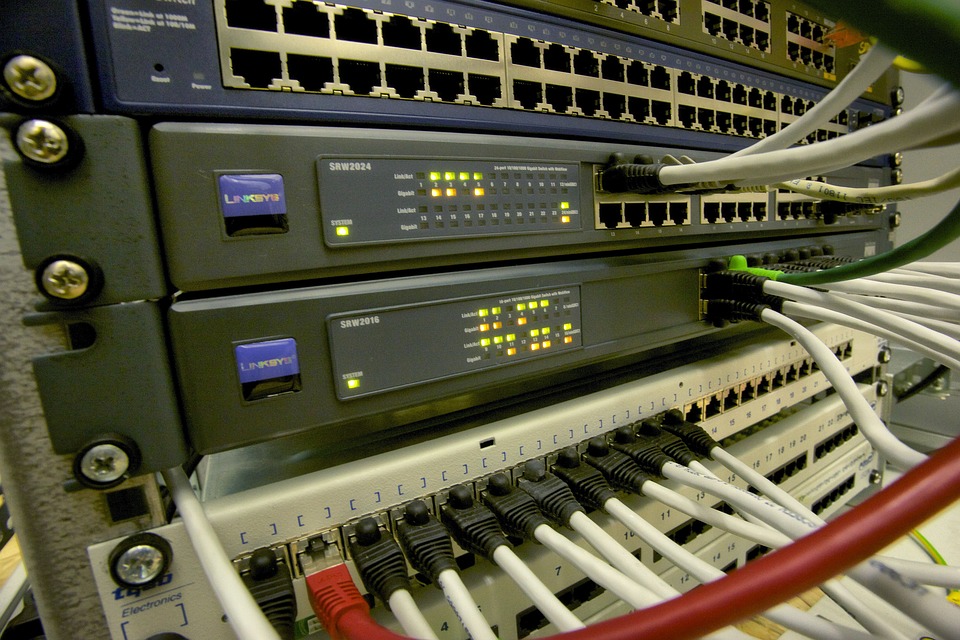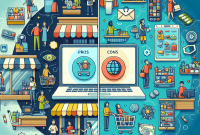
E-commerce vs Brick-and-Mortar: The Future of Shopping
In the ever-evolving landscape of retail, the age-old debate of E-commerce vs Brick-and-Mortar continues to be a hot topic. As technology advances and consumer behaviors shift, the way people shop is also changing. This article will delve into the intricacies of E-commerce and Brick-and-Mortar retail, exploring their respective strengths, limitations, and the impact they have on the future of shopping.
The Rise of E-commerce
E-commerce, or electronic commerce, refers to the buying and selling of goods and services over the internet. With the advent of online marketplaces such as Amazon, eBay, and Alibaba, E-commerce has experienced exponential growth in recent years. The convenience of browsing and purchasing products from the comfort of one’s own home has catapulted E-commerce into the mainstream.
Advantages of E-commerce include 24/7 accessibility, a wide range of products, and the ability to reach a global audience. Additionally, online retailers can often offer competitive pricing due to reduced overhead costs. The rise of mobile shopping has further fueled the growth of E-commerce, with consumers increasingly turning to their smartphones and tablets to make purchases.
The Resilience of Brick-and-Mortar
While E-commerce has made significant strides, the traditional Brick-and-Mortar retail model continues to maintain its relevance. Brick-and-Mortar refers to physical stores where customers can browse and purchase products in person. Retail giants like Walmart, Target, and Macy’s have long-standing presences in the Brick-and-Mortar realm.
Brick-and-Mortar stores offer a tactile shopping experience, allowing customers to touch, feel, and try on products before making a purchase. In addition, the immediacy of obtaining goods and the personalized assistance of in-store staff are unique advantages of the Brick-and-Mortar model. Many consumers also value the social aspect of shopping in physical stores, enjoying the opportunity to interact with friends or family while exploring retail spaces.
The Blurring of Boundaries
As the retail landscape evolves, the line between E-commerce and Brick-and-Mortar is becoming increasingly blurred. Many traditional retailers have embraced E-commerce, establishing their online presence to cater to digital-savvy consumers. Conversely, E-commerce giants like Amazon are making forays into the Brick-and-Mortar space, with the acquisition of Whole Foods and the launch of Amazon Go stores.
Furthermore, the concept of omnichannel retail is gaining traction, wherein businesses aim to provide a seamless shopping experience across various platforms. This approach integrates E-commerce, Brick-and-Mortar, and mobile commerce, allowing customers to engage with a brand through multiple touchpoints. For retailers, embracing both E-commerce and Brick-and-Mortar can lead to a more comprehensive and versatile shopping experience for consumers.
The Impact of Technology
Technology plays a pivotal role in shaping the future of shopping, influencing both E-commerce and Brick-and-Mortar. Augmented reality (AR) and virtual reality (VR) technologies are increasingly being leveraged to enhance the online shopping experience, allowing consumers to visualize products in a virtual space before making a purchase.
Similarly, in-store technologies such as self-checkout kiosks, interactive displays, and personalized recommendations are revolutionizing the Brick-and-Mortar experience. These advancements strive to combine the best of both worlds, integrating the convenience of online shopping with the sensory engagement of physical stores.
The Omnichannel Consumer
As consumer behaviors continue to evolve, the rise of the omnichannel consumer has become increasingly prevalent. With the ability to seamlessly transition between online and offline shopping, modern consumers expect a cohesive and integrated shopping experience. From researching products online to making purchases in-store, the journey of the omnichannel consumer is multifaceted and interconnected.
Businesses that effectively cater to the needs of the omnichannel consumer are poised to thrive in the future retail landscape. By offering a harmonious blend of E-commerce and Brick-and-Mortar experiences, retailers can appeal to a diverse range of preferences and shopping habits.
FAQs
Q: What are the main advantages of E-commerce?
A: E-commerce offers 24/7 accessibility, a wide range of products, and the ability to reach a global audience. Additionally, online retailers can often offer competitive pricing due to reduced overhead costs.
Q: What are the unique advantages of Brick-and-Mortar stores?
A: Brick-and-Mortar stores offer a tactile shopping experience, immediate product availability, and the personalized assistance of in-store staff. Many consumers also value the social aspect of shopping in physical stores.
Q: How can businesses adapt to the changing retail landscape?
A: Businesses can adapt by embracing omnichannel retail, integrating E-commerce and Brick-and-Mortar experiences to provide a seamless shopping journey for consumers. Additionally, leveraging technology to enhance the shopping experience is crucial in staying relevant.
Conclusion
As the retail landscape continues to evolve, the future of shopping lies in the seamless integration of E-commerce and Brick-and-Mortar experiences. By embracing the strengths of both models and catering to the needs of the omnichannel consumer, businesses can position themselves for success in an ever-changing market. The impact of technology, the blurring of boundaries between online and offline retail, and the shifting preferences of modern consumers all contribute to the dynamic nature of the retail industry. As we look to the future, the synergy between E-commerce and Brick-and-Mortar will undoubtedly shape the way we shop, paving the way for a more versatile and interconnected retail experience.






